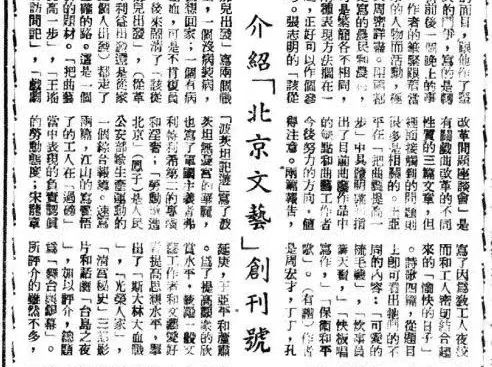[National Culture] By the way, "Gesar" epic ‖ ‖ 邛 邛
Author:Fang Zhi Sichuan Time:2022.09.02
By the way "Gesar" epic
Yiyi
The epic "Gesar" of the Tibetan hero is the longest epic in the world. It is known as the East "Homer Epic" and has been included in the world -class intangible cultural heritage list.
"Gesar" is a literary masterpiece widely circulated in the Tibetan folk. The epic through the deeds of King Gesar, the heroine of the hero, reflects the conditions of the ancient Tibetan society, politics, economy, military, religion, and folk customs living on the Qinghai -Tibet Plateau. The historical process of disputes, the hegemony of the state, and the unification of the country sang the king of Gesar's great achievements. Many experts and scholars called it the encyclopedia of studying Tibetan society. From the perspective of folk literature, the epic interprets the cultural psychology and national spirit of the Snow Highland Tibetan nation.

"Gesar" Tibetan Chinese Series (Photo Supply of the Academy of Social Sciences of the Tibet Autonomous Region, picture source: Xinhua News Agency)
The Gesar Thangka is based on the traditional Thangka, based on epic, and has a unique style of painting art. Due to the epic narrative story, the Gesar Thangka has unique performance areas. The epic describes a large number of military culture, regional culture, and folk culture, which provides a broader creative imagination space for styling art. Most of the composition can surpass the restrictions of the traditional styling rules, bet on subjective emotions, life experience, aesthetic taste, and give viewers to viewers. Bring a different visual impact. This is the characteristics of the Gesar Thangka.
Second, the epic of "Gesar" is the popular rap art of the Tibetan people's general love. It has a depth of influence among the masses and has spread widely. Many people can tell some stories in the epic, the image and personality of the main characters. It is precisely because of the recognition and attachment of a national cultural psychology in the long historical process that people appreciate and interpret the Gesar Thangka, which will have an inexplicable sense of approaching and incorporating. In the past, the Gesar Thangka was not commonly owned, and the owner had a certain region. Drawing and collectors are generally related temples, individual monks, and good conditions and good conditions and worshiping Gesar's families. Some rap artists are called Gesar Thangka, known as "Zhongtang", and individual monks have prayer rituals called "Son Tang". Gesar Thangka. Although there is broad performance space, from the discovered old Thangka and the situation learned, the content of the Gesar Thangka in the past is relatively single. General, the two princess, the upper end are the deity or the statue of the law, and the goddess of war. This type of Thangka highlights the scene of the Gesar horse race landing, which contains symbolic significance of joy, auspiciousness, exorcism, and victory. Therefore, the "horse racing king" occupies a considerable proportion in the Gesar Thangka.

King Gesar Biography of Thangka group paintings of Qin Duojiaba (Picture Source: Sichuan Museum WeChat public account)
From the discovered situation, Gesar's main manifestations are Thangka, stone carvings, woodcuts, woodcarvings, clay sculptures, copper casting, white painting, etc. The Gesar riding signs are generally used by worship, praying, and sacrifice. King Gesar rode on the left side of the viewer of the red horse and the horse head. Rightly Ruyi's whip, left to ride a spear, and wear nine weapons. The facial expression is based on specific intentions, with static statues, anger, and anger. There are also some Gesar styles that describe the "Gesar Song" described in the net in some high monks to describe the unique statue of King Gesar. Its statues include samurai statues, masters, and king statues. Most of them are single -person Thangka, and a few related general Thangka.
There are many Tanca series in the Sichuan Museum, and there are many stories. There are many stories. The pictures are gorgeous, magnificent, rich in connotation, and unique creativity. This is a rare group of Gesar Thangka, and it is the only Gesar cultural relics at home and abroad that can be completely preserved. It is one of the highlights and excitement in Gesar's cultural relics. According to the person in charge of the hospital, the Gesar Series Thangka was a paintings in the Qing Dynasty, and they made in -depth research on this, and published a well -produced decomposition and exquisite album. The series of Thangka has a total of eleven pieces. In addition to the edge mounting, its painting heart height is 82-84 cm and 59-60 cm wide. Related scholars have further positioned the order of the Eleven Thangka, marked as 1-11. Among them, No. 6 is the main Thangka, and the other 10 are hung on the left and right sides in order. The images in each Thangka are very dense, colorful and smooth. On average, there are about 140 figure portraits in each Thangka, more than 50 birds and beasts, and more than 20 buildings and black and white tents, including the palace, the general palace, the heavenly palace, the dragon palace, the monk of the temple, Meta, Sangtai, etc. Each Thangka is also painted with natural scenery such as snow mountains, grassland, holy mountains, rivers, lakes, and trees. More than 2,000 physical portraits are described on a picture of about five -square meters. The series of Thangka shows the protagonist in the epic of "Gesar" from being born from heaven to earth. The story of childhood, climbing the king of the Ridge through the horse race, the demons, conquering the enemy, promoting the Dharma, returning to heaven and so on Er story. Some of these contents are very detailed. In the shape of the body, tell people the colorful stories and heavy cultural heritage to people.

Gelsa Thangka (Picture Source: Cover News)
In the epic of the series of Thangka, the stories of "Heaven", "Born", "Horse Race", "The North Demon", "Huoling War", "Pakistan Shield Sect", "Han Di Cai Sect", "Lie Chima"Sect", "Mazhu Jinzong", "Northern Land Magic Zong", "Xining Qingsheng Sect", "Aye armor", "Bai Bai Yang Zong", "A Mo Dao Niu Zong", "Snow Landscape Crystal Sect", "Danma Qingzong Sect", "Gad Dapeng Sect, "Baiya Jinzong", "Goat Sect", "Rakshasong Pine Shizong", "Qinghai Lake", "Hongfa Lisheng", "Hell Save Mother", "Return to Heaven" and so on.Source: Sichuan Provincial Local House Work Office
Author: Yihuan
Supply: Ganzi Prefecture Local Chronicle Office
Picture: Fang Zhi Sichuan
- END -
Wang Zengqi another name "Zeng Qi" | Chen Jianjun

On March 7, 1985, Wang Zengqi said in the letter to the editorial board of Modern ...
Weifang created the "East Asian Capital" 丨 Qingzhou Specialty -Persimmon

Help Weifang created the capital of East Asian culture. Today, let's go to see the...